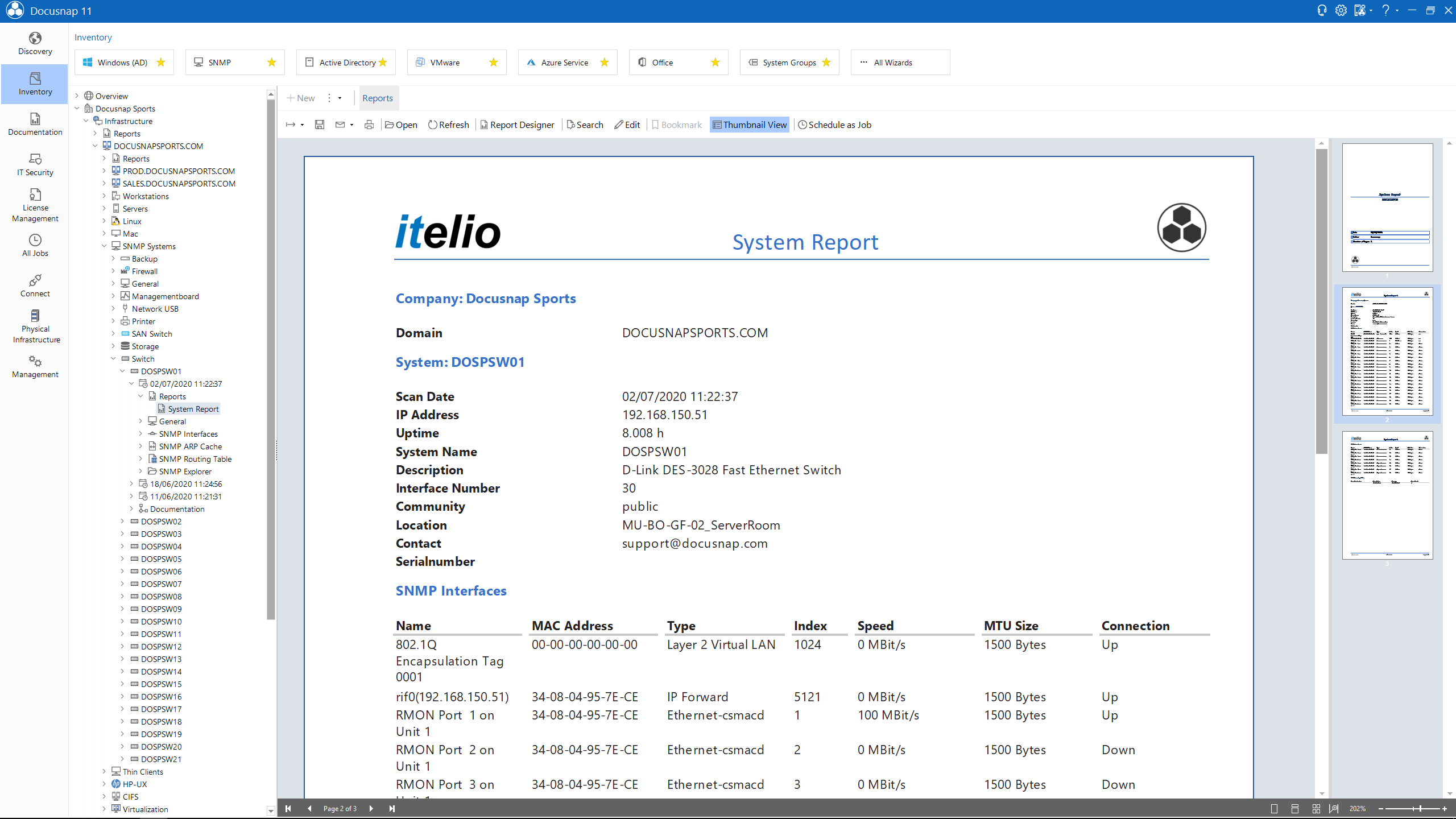Last updated: November 9, 2020
An up-to-date IT documentation helps an IT administrator in many ways: in exceptional situations, such as outages and audits, as well as in everyday life. However, IT documentation is only really helpful and efficient if it is complete. In other words, if it really does include all systems in the IT network. This means that not only servers and workstation systems, but also all printers, routers, switches, etc. must be properly documented. The Simple Network Management Protocol (SNMP) helps us to do this. SNMP was originally developed to monitor networks, but it also allows remote control and configuration of network components and error alarms.
SNMP: How does it work?
In short: SNMP is the protocol with which end devices, such as printers, routers and switches, “talk” to a central manager. The manager can request information or the end device can proactively send messages. In addition, it is possible to change certain data records of network devices via SNMP. An example of this is the IP address. The SNMP protocol is based on seven different data packets.
There are currently three different SNMP versions. Only the latest version, SNMPv3, supports sufficient security mechanisms such as encryption. However, due to the increased complexity, SNMPv3 is much less widespread than the older SNMPv2.
Inventory SNMP systems with Docusnap
In general, SNMP is a very simple protocol and has established itself as the standard due to its simplicity. Therefore almost all devices in the network can be addressed with SNMP. This is very practical for IT documentation, as a large number of devices can be inventoried using SNMP. Docusnap supports all SNMP versions and determines manufacturer, product description and various configuration data with the help of the SNMP protocol. These are then made available in the usual clear manner.
That’s Docusnap:

